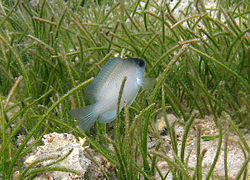| Chrysiptera | |
|---|---|
 | |
| Chrysiptera cyanea | |
| Scientific classification | |
| Kingdom: | Animalia |
| Phylum: | Chordata |
| Class: | Actinopterygii |
| Order: | Blenniiformes |
| Family: | Pomacentridae |
| Subfamily: | Pomacentrinae |
| Genus: | Chrysiptera Swainson, 1839 |
| Type species | |
| Glyphisodon azureus Cuvier, 1830 | |
Chrysiptera is a genus of damselfish in the family Pomacentridae.

